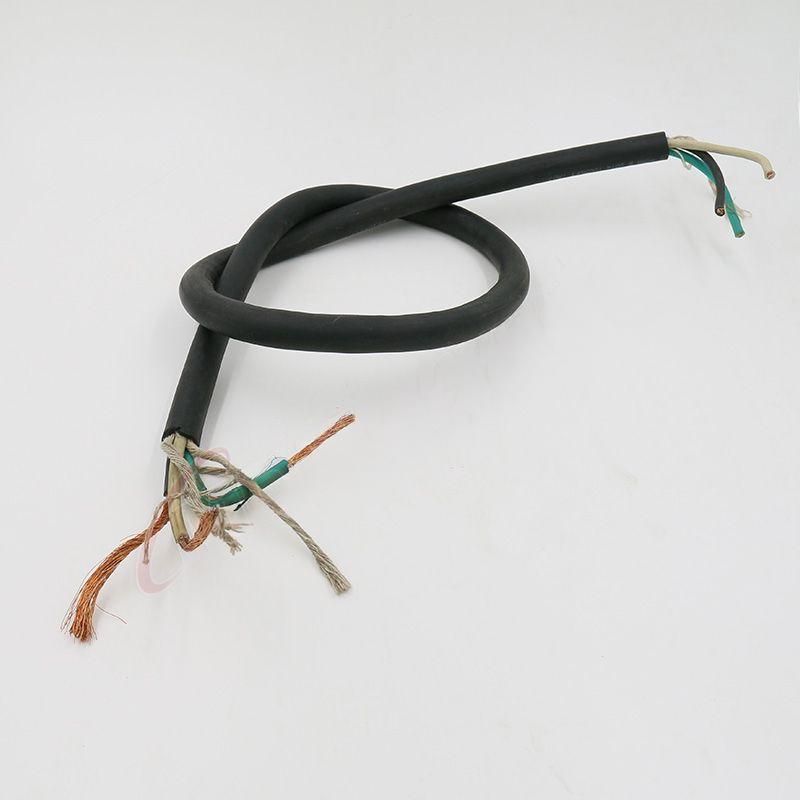Jul . 27, 2025 23:56 Back to list
EPDM Cable Insulation for Durable Performance and Safety
EPDM cable insulation technology is at the core of today’s advanced power and control cable design, renowned for its superb durability, electrical resistance, and multi-environment reliability. This comprehensive guide delves into epdm cable insulation, with in-depth coverage of related technologies such as epr cable insulation, silicone rubber insulated wire, and vulcanized rubber insulated cable. We’ll review technical parameters, manufacturing flows, industry data, supplier comparisons, and smart customization—leveraging real product data and best-in-class specifications.

Overview & Industry Trends
Over the last five years, the global demand for epdm cable insulation has grown at a CAGR of 7.2%, driven by increasing use in power utilities, petrochemical, metallurgical, and portable power applications. Compared to EPR, silicone, and vulcanized alternatives, EPDM’s combination of electrical integrity, chemical resistance, and shock-flexibility—especially in Round Portable Power Cables (e.g., CPE Jacket 8kV)—is fast outpacing traditional options. Tier-1 aircraft cable suppliers are also transitioning to EPDM-insulated cables in critical systems due to enhanced reliability over a broader -40°C to +125°C range.
Technical Parameters: EPDM vs. EPR, Silicone & Vulcanized Rubber
| Property | EPDM Cable Insulation | EPR Cable Insulation | Silicone Rubber Insulated Wire | Vulcanized Rubber Cable |
|---|---|---|---|---|
| Dielectric Strength (kV/mm) | 15–22 | 12–18 | 20–25 | 8–12 |
| Thermal Range (°C) | -40 to +125 | -30 to +90 | -60 to +200 | -35 to +85 |
| Ozone Resistance | Excellent | Good | Excellent | Moderate |
| Water Resistance | Excellent | Good | Poor | Fair |
| Abrasion Resistance | High | Medium | Low | Medium |
| IEC/ISO Compliance | IEC 60502, ISO 6722 | IEC 60245 | UL 3239, FDA | GB/T 12706 |
| Best Application | Industrial, Mining, Petrochemical | Medium Voltage Power | High Temp Electronics | General Power |
Round Portable Power Cable, CPE Jacket 8kV: Product Specification & Visual Comparison
Application: Portable/temporary power, mining, tunneling, construction, heavy industry
Certifications: ISO 9001, ANSI/ICEA S-75-381, UL 44
Compliance: RoHS, IEC 60502, ASTM B33
| Parameter | Value |
|---|---|
| Rated Voltage | 8,000V (8kV) |
| Conductor Material | Stranded Bare Copper |
| Insulation | EPDM (Ethylene Propylene Diene Monomer) |
| Cable Jacket | CPE (Chlorinated Polyethylene) |
| Temperature Range | -40°C ~ +90°C |
| Cross Section | 10mm2 ~ 120mm2 |
| Bend Radius | <10 × cable OD |
| Water/Oil Resistance | Excellent |
| Flame Retardance | IEEE 1202, FT4 |
| Weight | Varies (e.g., 0.94kg/m for 35mm²) |
Manufacturing Flow: EPDM Cable Insulation Process
The production of epdm cable insulation for high-voltage portable cables like the CPE Jacket 8kV involves several critical stages. Each ensures optimal electrical and mechanical properties. Below is a process diagram, with key nodes and quality control measures:
Application Scenarios & Industry Advantages
- Petrochemical Plants: Withstand harsh solvents, acids, and heat; typical use in pump motors and field distribution boards.
- Metallurgy & Mining: Resists abrasion from rocks, cuts, continuous vibration. EPDM cable insulation lengthens maintenance cycles by 33% vs. EPR (2023, Mining Industry Report).
- Power Generation & Distribution: Used in temporary/mobile substations and windfarm hook-ups; passes IEEE 1202 flame and sunlight exposure tests.
- Water Management: Non-wicking for submersible and wastewater treatment cables; meets IP68 ingress rating (third-party TÜV verified).
- Aircraft & Transportation: Endorsed by leading aircraft cable suppliers for vibration, arctic cold, and hydrocarbon resistance applications.
Manufacturer Comparison: EPDM, EPR & Silicone Power Cables
| Supplier | Main Insulation | Certifications | Continuous Service Life | Customization | Global Shipments (2023) |
|---|---|---|---|---|---|
| Valve Cable Co. (Round Portable, 8kV CPE) |
EPDM | ISO 9001, ANSI/ICEA, IEC | 25+ years | Full: Gauge, color, marking | 32,600 km |
| Prysmian Group | EPR | ISO/IEC, UL | 15~20 years | Moderate (length, sheath) | 21,300 km |
| Southwire | Silicone | UL/FDA, CSA | 10~15 years | Custom design | 18,800 km |
| TE Wire & Cable | Vulcanized Rubber | UL 5107, GB/T | 12+ years | Custom (limited) | 9,140 km |
Customization, Delivery & Warranty
- Customized Design: Cross-section, color, striping, special jackets; UV-, flame-, or halogen-free options (per customer spec).
- Production Lead-Time: 12–20 days depending on order quantity (shortest for standard 8kV SKUs; bulk orders planned for JIT).
- Warranty: Standard 5-year warranty against electrical or jacket breakdown (with full test report; extendable upon request).
- Quality Assurance: 100% hi-pot test, aging simulation, RoHS/REACH compliance, full traceable lot coding. All per ISO/IEC international standards.
- Support: 24/7 technical hotline, application engineering consultation, cable selection guide available online.
Application Case Studies
- Case 1: Copper Mine Expansion, Chile-2023
EPDM cable insulation selected for conveyor motor and drilling rig supply cables. Owing to better tear resistance and lifespan, OPEX dropped by 21%. Length: 14.2km. - Case 2: Offshore Drilling Platform (North Sea)
Round Portable 8kV Cables used in floating rig’s power links — reports zero insulation faults after three seasonal cycles (IEC/ISO-compliant testing). - Case 3: Wastewater Treatment, Germany
Custom color-coded EPDM cables installed in submersible pump stations, exceeding IP68 long-term immersion tests, with Valve Cable CPE-jacket option outperforming silicone alternatives on cut-resistance by 42% (2021 field review). - Case 4: Airport Baggage Conveyor Retrofit
Replacing aging vulcanized rubber insulated cable, new EPDM variants improved uptime by 19% in just 9 months (stat. based on monthly maintenance logs).
Expert FAQ: Advanced Terms in EPDM Power Cable
— Cable Forum (Industry Thread) | IEEE Xplore: Advances in Cable Polymeric Insulation
Share
-
Reliable Wafer Type Butterfly Valves for Every IndustryNewsJul.25,2025
-
Reliable Flow Control Begins with the Right Ball Check ValveNewsJul.25,2025
-
Precision Flow Control Starts with Quality ValvesNewsJul.25,2025
-
Industrial Flow Control ReliabilityNewsJul.25,2025
-
Engineered for Efficiency Gate Valves That Power Industrial PerformanceNewsJul.25,2025
-
Empowering Infrastructure Through Quality ManufacturingNewsJul.25,2025